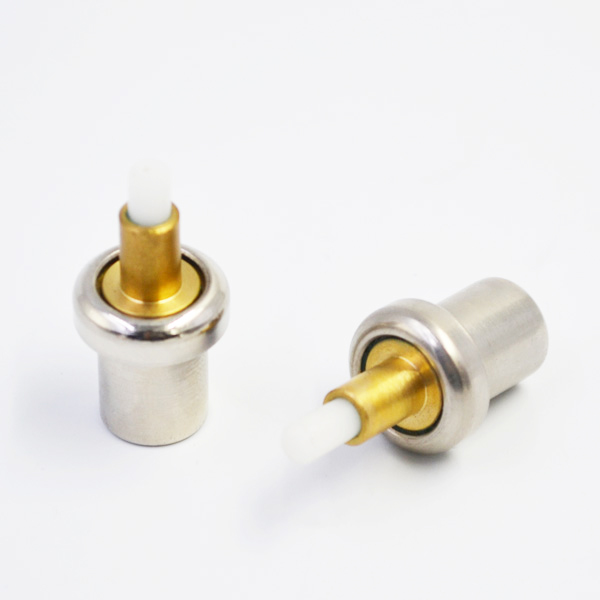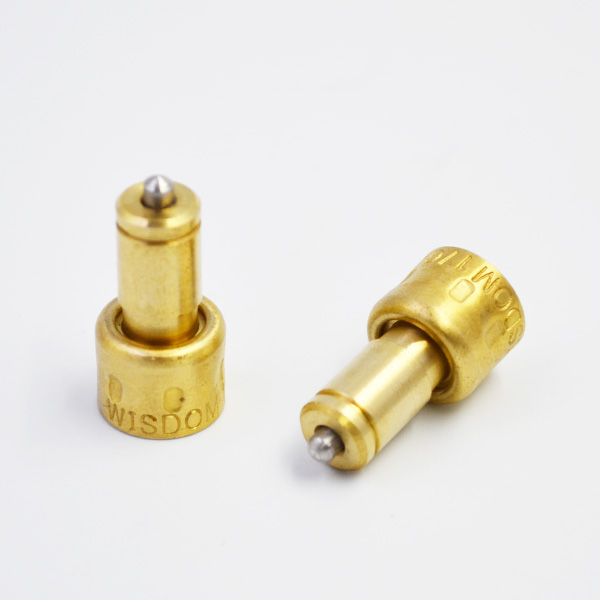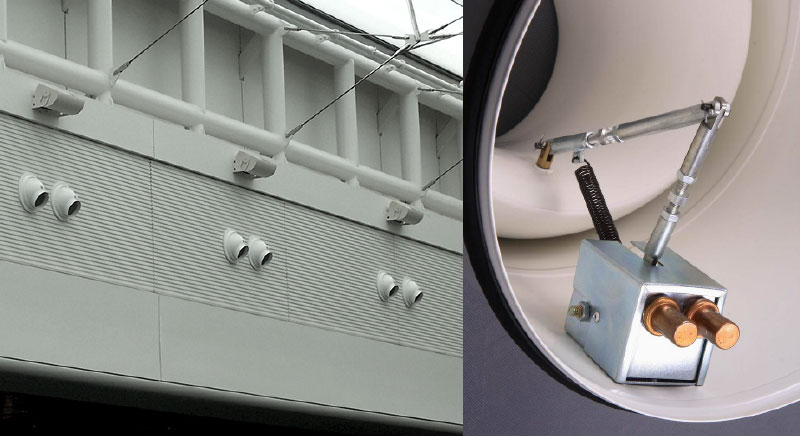This paper expounds the design idea of general liquid mixing mixing device, and uses Siemens PLC controller programming control to realize the automatic control of liquid feeding and mixing. The device is mainly composed of Siemens S7-1500 controller, reactor, frequency conversion motor, Siemens G120 converter, weighing and batching system and control operation panel.

The reactor and installation accessories are reduced in proportion to the actual field application and modularized installation. The speed of the motor is controlled by PLC according to the formula, and the speed of the motor is controlled by the output of the frequency converter. The speed of the motor and the process is visually displayed by the operation panel, thus the process of synthesizing the final product by stirring several materials in the actual production process is simply described. The control system is mainly composed of Siemens S7-1500 controller, Siemens G120 frequency converter, Siemens touch control panel TP700, and reaction kettle, frequency conversion motor, weighing and batching system. Human Machine Interaction (HMI) refers to the equipment in which people and machines exchange information. In the field of control, it generally refers to the equipment in which field staff communicate with the control equipment system to complete the control function. It is the best partner of the PLC controller. The most basic and important function of man-machine interface is to configure the status of median variables of field devices and the values of digital variables in some important registers, to issue execution instructions to PLC with buttons in the configuration screen, and to modify various parameters of PLC registers. The man-machine interface of the system adopts Siemens touch control panel TP700. In order to simplify the series of panels, it adopts analog resistance touch screen, has RJ-45 Ethernet interface, and the communication rate is 10/100Mbit/s. It is used to communicate with configuration computer or Siemens PLC. Siemens PLC S7-1500? Series is an innovative product of Siemens PLC series. Compared with Siemens PLC S7-300 Series, Siemens PLC S7-400 Series has greatly improved in performance-price ratio, operation ability, communication function, expansion performance, response speed and display function. Thus, a more excellent solution is provided for users in the configuration of automatic control system.
S7-1500 integrates motion control, industrial information security and fault safety functions. Its motion control functions support up to 20 speed control shafts, positioning shafts and external encoders. It has high-speed counting and measurement functions. The typical processing time of bit operation instructions is 10ns. In other words, 100 bit operation instructions can be processed per microsecond and 64 ns for floating-point operation instructions. The resolution of AI and AO modules are 16 bits, the conversion time of each module of 8 AI module is 125 us, and the digital input module has 50uS ultra-short input delay. Using PROFINET IRT communication can ensure the determined reaction time and high precision system response, and the shortest cycle time is 250us. The motion control function of S7-1500 is integrated into CPU module. No additional motion control module is needed. The project and configuration process object are created by TIA Portal, and the process object is controlled according to the standard of PLC open. Motion control can use drivers with PROFINET IO IRT and PROFIDrive interfaces, or drivers with analog settings. Motion control function supports speed control axis, positioning axis and external encoder process object. Frequency converter is a kind of variable speed drive system.
It changes the magnitude and frequency of AC motor working voltage by AC-DC-AC or AC-AC mode, so as to smoothly control the speed and torque of AC motor driving. Siemens Inverter SINAMICS G120 Series is a universal single-machine drive converter. It can meet stricter demands. Siemens frequency converter SINAMICS G120 can be widely used in various fields of variable frequency speed control tasks, especially in the industrial environment of wind turbines, pumps and compressors and other equipment speed control applications. Its many characteristics provide convenience for users in the process of use and debugging, make users improve work efficiency, save maintenance costs, and bring energy-saving effect for factories, improve efficiency. Siemens Inverter SINAMICS G120 has powerful communication function. It can be integrated into building automation system through integrated Modbus RTU, BACnet MS/TP, etc. And it can be integrated into the automatic control system through PROFINET and PROFIBUS communication. Industrial Ethernet (PROFINET) has good real-time performance. It can connect field devices directly through Ethernet, which is simple and convenient to use. Industrial Ethernet (PROFINET) supports distributed automatic control mode, communication between master station and master station, and communication between master station and slave station. Industrial Ethernet (PROFINET) is a new Ethernet communication system, which can be compatible with and identify the communication between many manufacturer’s products. The automation and engineering mode of Industrial Ethernet (PROFINET) optimizes the distributed automation control system, so that the application of automation control system can save the cost of configuration and debugging. In addition, industrial Ethernet (PROFINET) provides protection for the existing automation control system, so it is the choice of most users. PROFINET-IRT hard real-time system is used for motion control. S7-1500 PLC, HMI and frequency converter are configurated by TIA portal software, and programmed by PLC program. The configuration of man-machine interface screen and parameter design of frequency converter are carried out. The program and picture are downloaded and the liquid material is fed and stirred. The device simply reflects the process of mixing and synthesizing materials according to the formula in the production process. Material is measured by weighing system, the signal is input into PLC, and the weight and order of different materials are controlled by PLC according to the formula. After the ingredient is finished, the material is weighed.

PLC controls the speed of mixing by communicating with frequency converter, so as to control the quality of production. The weighing system uses the weighing sensor. In the whole weighing system, the weighing sensor plays a very important role. The working principle of the weighing sensor is to convert the weight signal into electrical signal. After the amplifier and A/D conversion of the instrument, it enters the microprocessor operation. Resistance strain gauge weighing sensor is used in this device. Its principle is as follows: elastomer (elastic element, sensitive beam) produces elastic deformation under external force, so that resistance strain gauge (conversion element) pasted on his surface also produces deformation.
After resistance strain gauge is deformed, its resistance value will change (increase or decrease), and then correspondingly. The measuring circuit converts this resistance change into electrical signal (voltage or current), thus completing the process of converting external force into electrical signal. Therefore, resistance strain gauge, elastomer and detection circuit are indispensable components of resistance strain gauge weighing sensor. Elastomer is a structural component with special shape. Its function has two parts. First, it bears the external force of the weighing sensor, produces reaction force to the external force, and achieves relative static equilibrium. Secondly, it produces a high-quality strain field (region) so that the resistance strain gauge pasted in the region can achieve ideal Strain Electrical signals. Conversion tasks. The function of the detection circuit is to change the resistance change of the resistance strain gauge into the voltage output. Wheatstone bridge is used in the detection circuit, which can not only restrain the influence of temperature change, but also restrain the interference of lateral force.
At the same time, it can also solve the compensation problem of weighing sensor. PLC controls the forward, reverse, stop and change frequency of frequency converter through bus PROFINET. The configuration of hardware is downloaded to the PLC, and accessed online through the menu bar.

The computer corresponds to the network card, the corresponding G120, and the IP address of the G120 is the address set in the hardware configuration. Reset: W # 16 # 04FE. The set value and feedback value received by the converter are 4000H corresponding to full range, and the corresponding set speed is 350rpm when writing W#16#1000H. According to the process, STEP7 control program is compiled to control the operation of frequency converter. Start the operation. Press the touch screen start button, YV1 is energized and self-locked, and liquid A flows into the container. Liquid weight to set value 1. When the liquid weight reaches the set value of 1, the solenoid valve YV1 is turned off and closed, while the solenoid valve YV2 is electrically connected, and liquid B flows into the container. The liquid weight is 2. When the liquid weight reaches the set value of 2, thermostatic element the solenoid valve YV2 is cut off and closed.
After 10 seconds delay, the motor is started to stir forward. Reverse stirring. When the forward stirring time of the motor reaches the set T1, the motor is stirred in reverse. Reverse stirring. The motor stops stirring when the reverse stirring time reaches the set T2.
Stop operation. If the touch screen stop button is pressed, the automatic process will be stopped immediately at the current operation step. Liquid mixing is a very important and indispensable link in the production process of chemical, beverage, machinery and other industries. The key of liquid mixing is to ensure the accuracy and proportion of raw materials in the mixing process and to ensure the full mixing of raw materials. The traditional relay control liquid mixing system has many hardware connections, poor reliability and low automation. Using PLC to realize liquid mixing control can not only accurately control all links of liquid mixing process, but also greatly reduce costs. It can be directly applied to industrial sites, and the requirements for field operators are not high.
